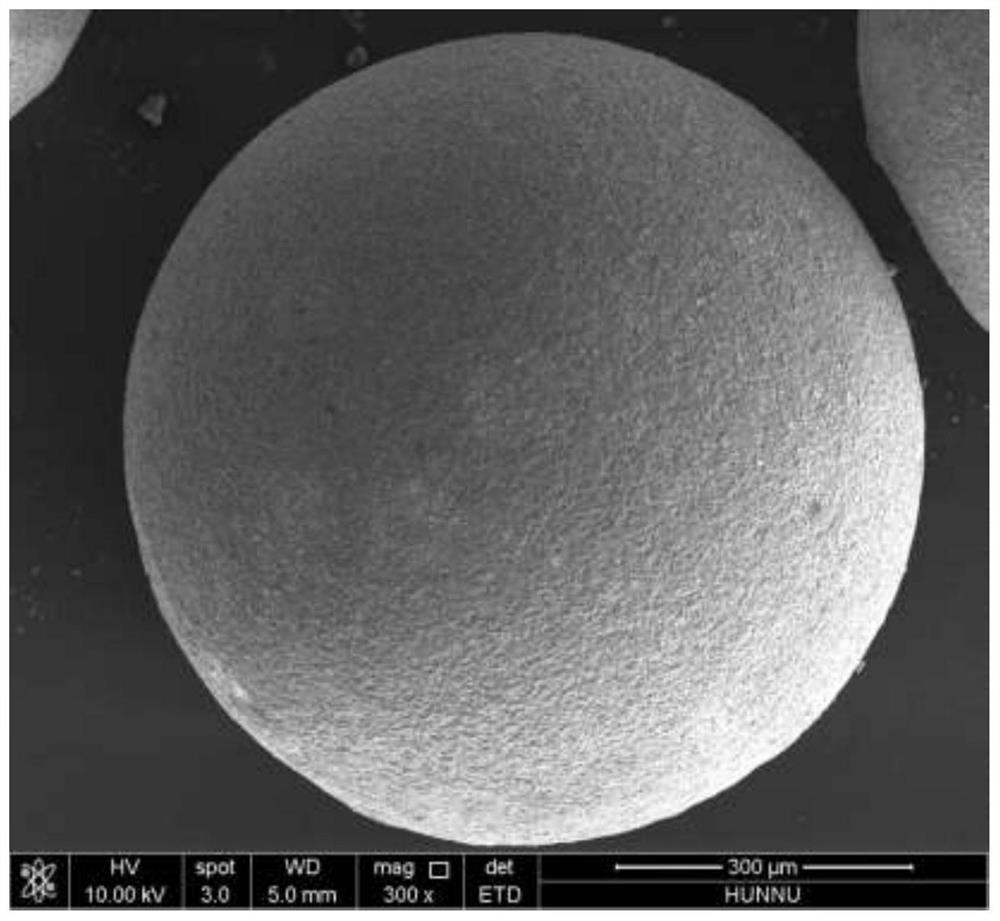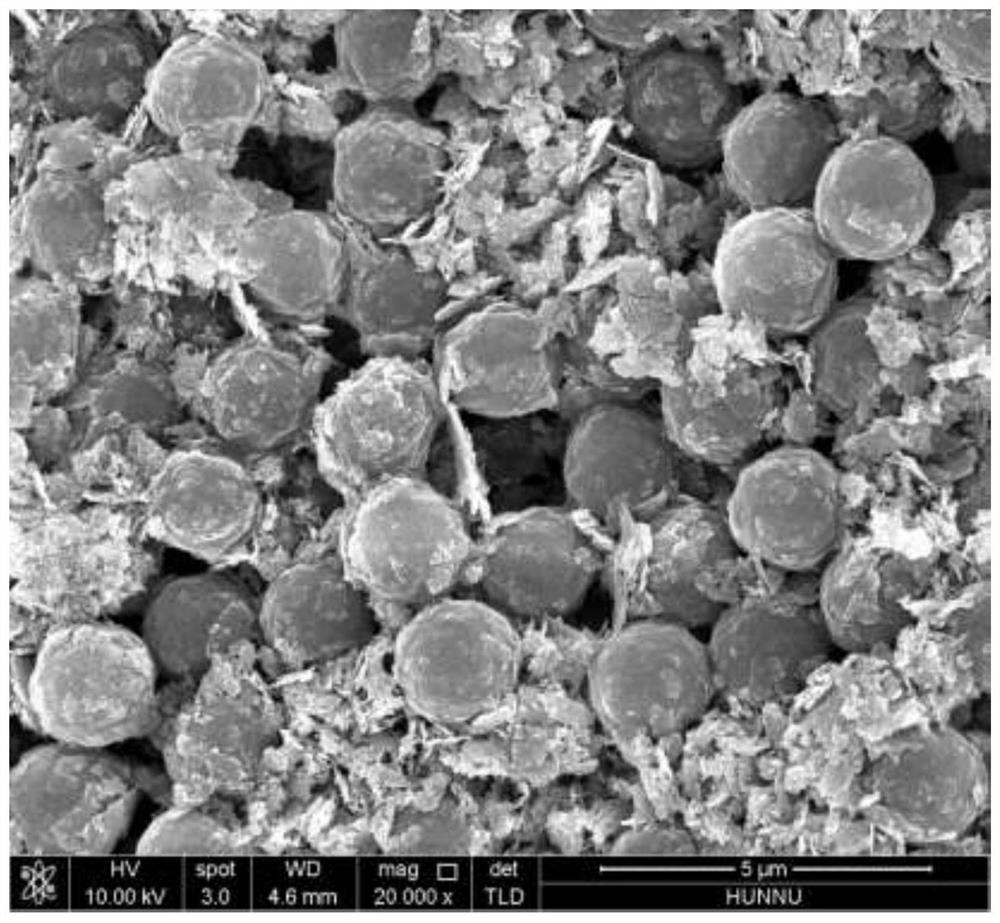Method for rapidly preparing superparticles based on Leidenfrost phenomenon
A particle and fast technology, applied in separation methods, chemical instruments and methods, and liquid separation into beads and granules, etc., can solve problems such as environmental hazards, complicated processes, and resource consumption
- Summary
- Abstract
- Description
- Claims
- Application Information
AI Technical Summary
Problems solved by technology
Method used
Image
Examples
Embodiment 1
[0033] (1) Disperse 6g of ZnO nanoparticles and 6g of PMMA microparticles in deionized water, and perform ultrasonic treatment to obtain a dispersion with a mass concentration of 10%;
[0034] (2) Use a micro-injector to control the volume of the droplet, the volume of each droplet is 2 microliters, and the droplet is dripped onto an aluminum alloy plate with a surface temperature above 220°C under the action of its own gravity; The outlet of the injector is placed 20 mm above the upper surface of the aluminum alloy plate;
[0035] (3) After 56 seconds, the solvent evaporated completely, and the spherical superparticles formed by the solute were collected; ZnO&PMMA superparticles with an average particle diameter of 600 microns were obtained.
[0036] The obtained ZnO&PMMA superparticle particles were characterized by electron microscope, the result is figure 1 and figure 2 . figure 1 Shows the morphology of the resulting single ZnO&PMMA superparticles, a spherical shape w...
Embodiment 2
[0038] (1) 3.6g TiO 2Nanoparticles and 8.4g PMMA microparticles are dispersed in deionized water, and ultrasonically treated to obtain a dispersion with a mass concentration of 10%;
[0039] (2) Use a micro-sampler to control the volume of the droplet, the volume of each droplet is 4 microliters, and the droplet is added dropwise to an aviation aluminum alloy plate with a surface temperature above 240° C. under the action of its own gravity; The outlet of the micro-sampler is placed 15 mm above the upper surface of the aviation aluminum alloy plate;
[0040] (3) After 58 seconds, the solvent evaporated completely, and the spherical superparticles formed by the solute were collected; the TiO with an average particle diameter of 850 microns was obtained. 2 & PMMA super particles.
Embodiment 3
[0042] (1) 100g E-51 epoxy resin, 10.3g curing agent (diethylenetriamine) and 12.26g TiO 2 The nanoparticles are dispersed in ethyl acetate, and ultrasonically treated to obtain a dispersion with a mass concentration of 10%;
[0043] (2) Use a micro-sampler to control the volume of the droplet, the volume of each droplet is 4 microliters, and the droplet is added dropwise to an aviation aluminum alloy plate with a surface temperature above 270° C. under the action of its own gravity; The outlet of the micro-sampler is placed 15 mm above the upper surface of the aviation aluminum alloy plate;
[0044] (3) After 46 seconds, the solvent evaporates and collects the spherical superparticles formed by the solute; the resin & TiO having an average particle diameter of 900 microns 2 Ultraparticles.
PUM
| Property | Measurement | Unit |
|---|---|---|
| The average particle size | aaaaa | aaaaa |
| The average particle size | aaaaa | aaaaa |
| The average particle size | aaaaa | aaaaa |
Abstract
Description
Claims
Application Information
 Login to View More
Login to View More - R&D
- Intellectual Property
- Life Sciences
- Materials
- Tech Scout
- Unparalleled Data Quality
- Higher Quality Content
- 60% Fewer Hallucinations
Browse by: Latest US Patents, China's latest patents, Technical Efficacy Thesaurus, Application Domain, Technology Topic, Popular Technical Reports.
© 2025 PatSnap. All rights reserved.Legal|Privacy policy|Modern Slavery Act Transparency Statement|Sitemap|About US| Contact US: help@patsnap.com


